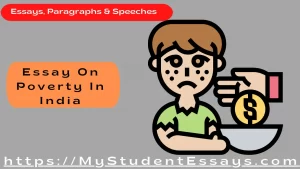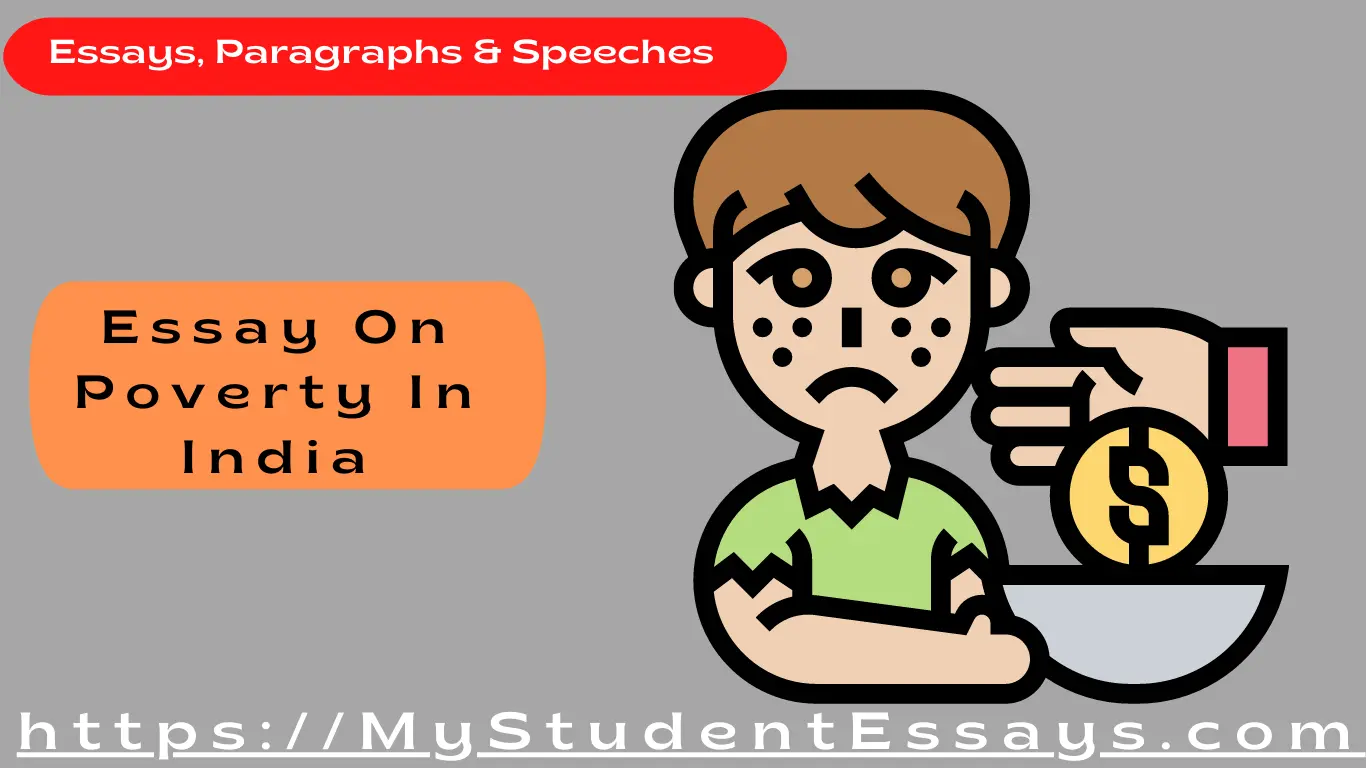Poverty is the curse, it is one of largest obstacle in the way of national progress at multiple fronts. The following essay on Poverty in India explores the poverty, its meaning & concept, root causes and ways how to eradicate poverty in India. This essay is very useful for children & students in their school exams and written tests.
Essay on Poverty in India | Impacts of Poverty Essay | Causes & how to way to root it out.
Poverty is burning issue of India. India is home to one-third of world’s poorest people. According to various surveys India has more than 300 million people who are living below poverty line. This is despite the fact that India has recorded impressive economic growth in last two decades.
There are many reasons for poverty in India. One of the main reasons is inequality. There is huge disparity in income and wealth in India. Nearly 60% of the population lives on less than $2 a day. According to World Bank, this is because of low level of human development, lack of access to education, health and other basic services.
>>>> Read Also: “Paragraph On Harms Caused by Micro-organisms”

Geographical factors also play a role in perpetuating poverty in India. Rural areas are lagging behind in terms of development. Nearly two-thirds of the population lives in villages, where the standard of living is very low.
There is lack of infrastructure and basic amenities like education, health, sanitation, etc.
Poor governance is another reason for poverty in India. Corruption is rampant in government offices. There is lack of transparency and accountability. As a result, the benefits of economic growth do not reach the poor.
>>>> Read Also: ” Essay On Human Equality & Its Importance”
Poverty is also a result of social discrimination against certain sections of society. Dalits and tribal people are at a disadvantage in terms of education and employment. They are often denied access to basic amenities like food, water and shelter.
Impacts of Poverty
Poverty has a number of negative impacts on the individual as well as on society as a whole. On the individual, it leads to poor health, lack of education and skills, and a lack of opportunities. This in turn affects their ability to find decent employment and earn a good income. As a result, they remain trapped in a cycle of poverty.
Poverty also has a negative impact on the mental health of the poor. They often experience stress, anxiety and depression. This leads to problems in social relationships and can even lead to suicide.
On society as a whole, poverty leads to increased crime rates, violence and social unrest. It also results in poor health outcomes and low life expectancy. It hampers economic growth and creates an environment of insecurity and instability.
Solutions of Poverty in India
There is no single solution to poverty. However, there are a number of measures that can be taken to reduce it. On the individual level, the most important thing is to provide access to education and skills training. This will help the poor to find decent employment and earn a better income.
On the societal level, there is a need for economic growth that is inclusive and benefits all sections of society. There should be more investment in rural areas, so as to create jobs and improve infrastructure. The government also needs to take measures to reduce corruption and increase transparency. There is also a need to address social discrimination against certain sections of society. This can be done by providing them with access to education, health and other basic services.
Poverty is a complex problem that requires a multi-pronged approach. By taking various measures at the individual, societal and government level, it is possible to reduce poverty and improve the standard of living of the people.
Conclusion
Therefore, Poverty is complex issue of India. it can be alleviated by taking some steps like reducing inequality, investing in education and health, providing basic amenities in rural areas and improving governance.
